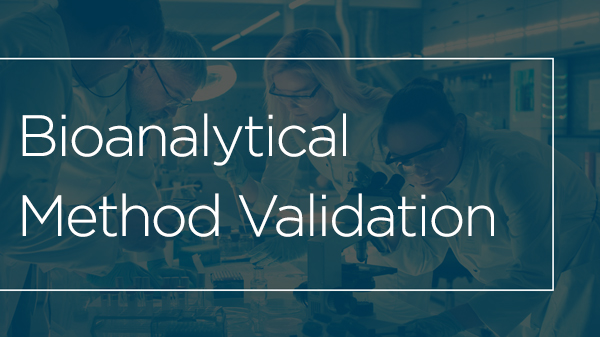
While most bioanalytical assay characterization that takes place at Worldwide Clinical Trials involves fully validated methods, we’ve seen a rise in the popularity of an alternative approach in recent years.
In a Worldwide Clinical Trials webinar about clinical trial design, Steve Unger, Senior VP of Bioanalysis, described the “fit-for-purpose assay” as an innovative way to answer questions earlier in clinical trial development, and often in a more cost effective manner than with fully validated methods. Whether you call it fit-for-purpose, tiered assays, scientific validation, qualified assays or partial validation, this flexible approach to bioanalytical method validation is a necessary component of current drug development programs.
Varying Shades of Grey in Clinical Research May Require a Flexible Strategy
Bioanalysis to support drug development is not always rigidly black and white. Throughout development bioanalysts are confronted with situations of varying shades of grey that require this flexible strategy. Various study objectives and resource availability limit the need for a full bioanalytical method validation.
Anything less than a full method validation requires scientific justification and acceptance of some level of risk. Risk aversion has generally resulted in a deference to full bioanalytical method validation following published regulatory guidance. This mindset has consequences of increased cost, timeline delays and missing valuable information. Having a standard operating procedure (SOP) on fit-for-purpose bioanalytical assay characterization helps to define the right level of qualification for the intended purpose. Although it is impossible to capture every situational nuance in a SOP, Worldwide’s decision grid architecture framed by over a decade of debate on the subject furnishes a tool to spark conversation between stakeholders and frames an effective strategy for unique situations.
Extensive Debate Results in Regulatory Publication
There are various study types and objectives across the drug development phases that present opportunities for a fit-for-purpose method validation approach. The most commonly encountered and harmonized include bioanalysis in discovery, metabolites in safety testing (MIST) and biomarkers. The strategies for characterizing novel or disproportionate human metabolites and their role in overall drug safety have been extensively debated in peer-reviewed journals and resulted in regulatory publications (1, 2). Generally, decisions are relatively straightforward and are based on relative abundance and biological activity. Recently, Steve Unger described the use of tiered assays for early identification of inter-species differences in metabolism. Tier selection is more challenging for biomarkers due to an array of intended data use.
For example, biomarker data can be used for discovery candidate selection up to defining patient dose, each requiring increasing levels of bioanalytical assay characterization. Like MIST, biomarker assay characterization has been heavily debated and published, resulting in fairly well harmonized strategies in the industry that are being encoded in regulatory guidance. In addition, there are other areas that use a fit-for-purpose method validation approach that have not been as harmonized. These can include tissue analyses, urine analyses, rare matrices and non-clinical tolerance studies (dose-range finding (DRF)). Study sponsor requirements for bioanalytical assay qualification or validation in these areas are inconsistent.
Lack of Authentic Reference Standard Most Common Reason for a Qualified Assay
The process of designing a fit-for-purpose qualification starts with understanding the study objective and quality of assay reagents such as reference material. The most common reason for a qualified assay is the lack of authentic reference standard. It is impossible to meet regulatory requirements for full bioanalytical method validation when lacking fully characterized standards. The next step is a risk-based selection of figures of merit and acceptance criteria using the guidance of a fit-for-purpose SOP combined with an understanding of assay robustness (3). The figures of merit can include, but are not limited to, specific laboratory investigations such as accuracy and precision, specificity, selectivity, stability, matrix effects, reproducibility and sensitivity. The selected figures of merit should confirm adequate method performance characteristics on the critical assay aspects that establish assurance the method meets quality attributes for study objectives.
For instance, stability in matrix will be an important determination when measuring unstable molecules and should be selected as part of the qualification. However, specificity and selectivity for a non-clinical DRF study may not be important with uniformly bred and handled species. Lastly, the objectives, figures of merit and acceptance criteria need to be encoded in a qualification plan. The qualification plan should discuss justifications for not conducting irrelevant assessments and for adding assessments in addition to any listed in regulatory guidance for full method validation.
The end result of a fit-for-purpose qualification is a resource-effective and efficient demonstration of the bioanalytical method’s performance tailored to meet the study objectives, ultimately providing reliable study data to make important decisions. The decisions may involve further assay development and progression to a fully validated method.
1) Guidance for Industry; Safety Testing of Drug Metabolites. U.S. Department of Health and Human Services; Food and Drug Administration; Center for Drug Evaluation and Research (CDER); 2008.
2) CPMP/ICH/286/95 ICH Topic M3 (R2); Guidance on nonclinical safety studies for the conduct of human clinical trials and marketing authorization for pharmaceuticals; 2009.
3) Unger S, Horvath H, Tan M, et al., Making methods rugged for regulated bioanalysis. Bioanalysis (2015), 7(7), 833-852.


